Start Your Free Trial!
Sign up to our newsletter, stay updated on news and exclusive offers from EaseUS. Don't worry, if you change your mind, you can unsubscribe at any time, free of charge. We value your privacy (Privacy Policy).
Featured Articles
What is taking up space in my C drive? Are there any easy options for checking disk usage or disk space on your Windows PC? Follow through this article to understand how to check disk usage in detail. Additionally, for Mac and Linux OS users, go to the latter part of this guide.
| Workable Solutions | Step-by-step Troubleshooting |
|---|---|
| How to View Disk Space Use in Windows 10/11 |
For Windows 10...Full steps For Windows 11...Full steps |
| Linux Check Disk Space | Check Linux commands...Full steps |
| How to View Disk Space on Mac | Go to Get Info or About This Mac...Full steps |
| How to Free Up Space with EaseUS Partition Master | Run the "Allocate Space" function...Full steps |
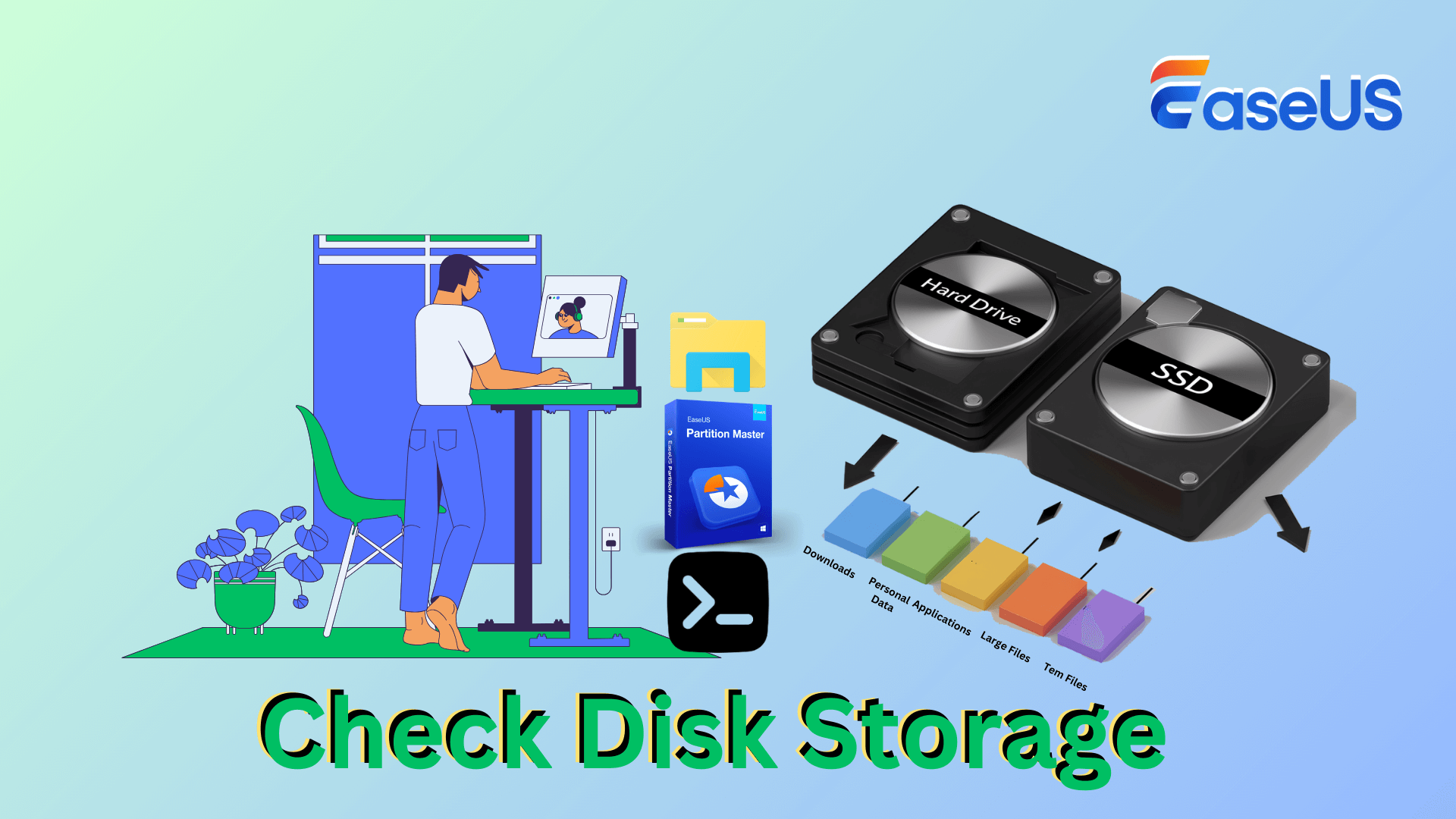
Many things can take up space on your hard drive. The most common are probably files:
Go through to check the used and free space of the disk. Next, we will talk about how to use free disk space analyzer to view disk space on Windows 10. Keep reading.
EaseUS Partition Master Free with its Disk Space Analyzer can help you quickly view the disk storage and usage in a simple click. Here is how to view your disk space storage usage state:
Step 1. Launch EaseUS Partition Master and turn to Discovery. Find and Download Space Analyzer below Frequently Used Tools.
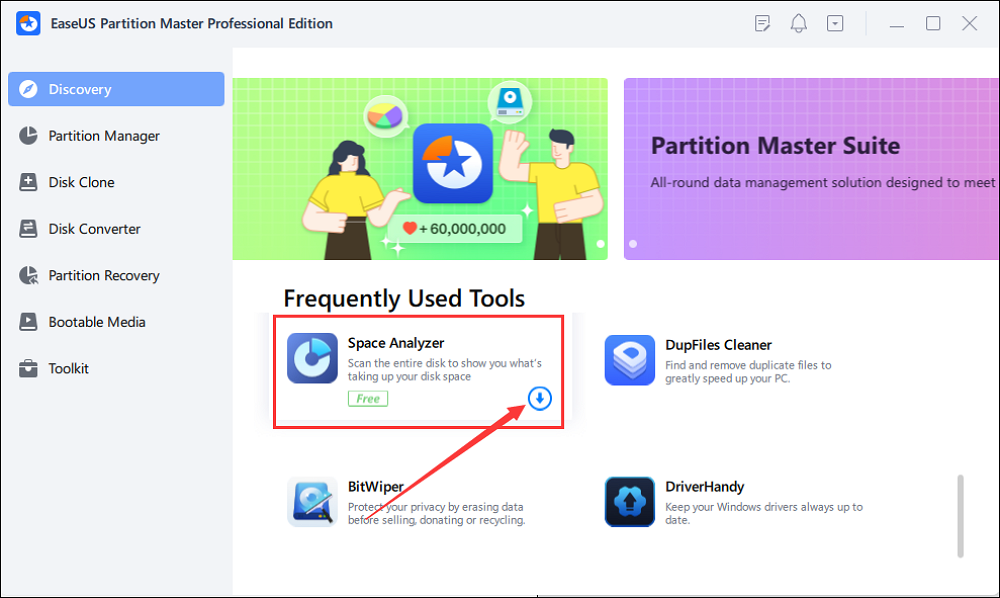
Step 2. In the Space Analyzer pop-up window, select the target disk to be analyzed and click Analyze in the upper right corner.
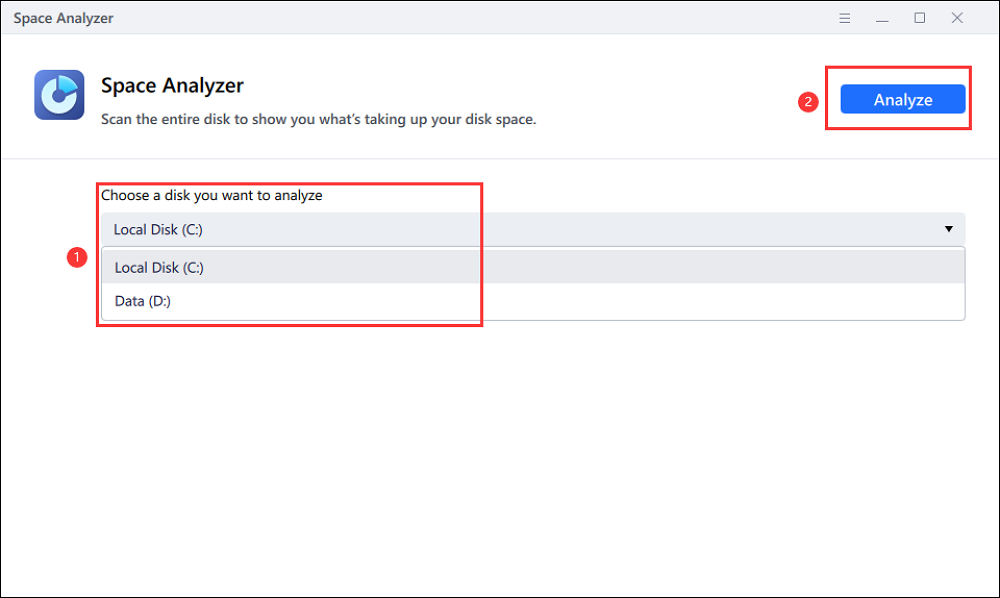
Step 3. Wait a while, and you will see the detailed data. You can click on Folder/File to view different data types and click on the small folder icon to see more information inside the file.
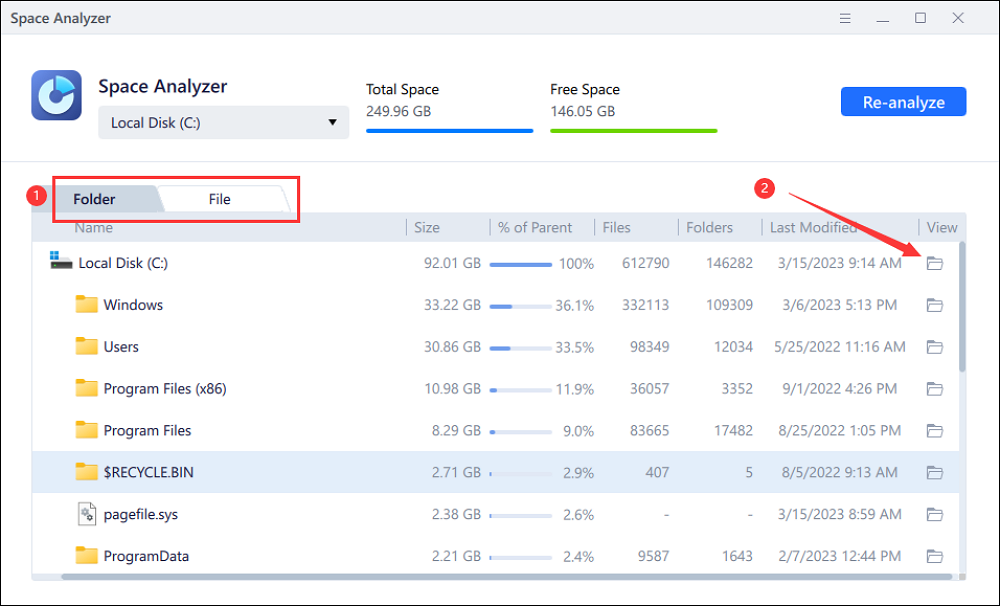
You can also use this feature to view and find large files on your computer. You may refer to this link to view the details: How to Find Large Files on Windows 10.
Moreover, don't forget to share this free disk usage analyzer software online to help more people learn their disk usage in just one click:
Step 1. Right-click the Windows icon and choose Settings from the list.
Step 2. Click on the System and choose the Storage tab.
Step 3. Then you can see the default C drive's space.
Step 4. Also, you can click the "Show more categories" to check more.

7 Ways to Fix 99% Disk Usage on Windows
Discover effective solutions to resolve 99% disk usage issues on Windows. Follow seven methods to optimize your system's performance efficiently.
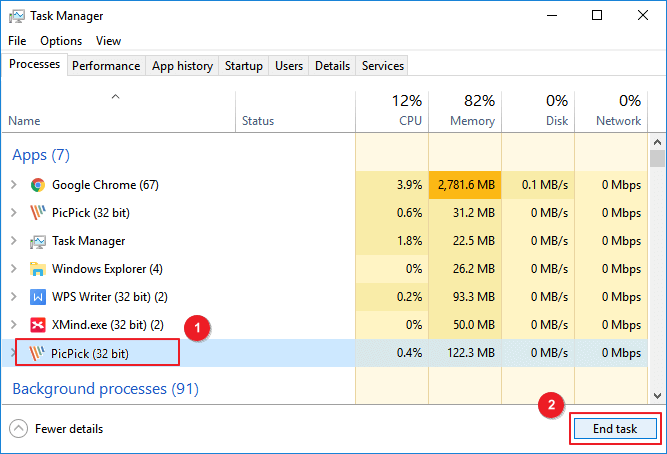
Step 1. Type Command Prompt in the search box.
Step 2. Click on the "Run as administrator."
Step 3. Type wmic diskdrive get size, and press Enter.
Then you can see the total disk size in number mode instead of GB.

Note: To calculate disk number in GB: 1GB=1000MB, 120,000MB. You can check it and alter it to GB. To get more information about this method, you can click the link below.
Tutorial: Check Disk Space on Windows 10 Using CMD 2023
The main purpose of this article is that EaseUS wants to teach you how to use CMD to check hard disk usage on Windows 10. Dive into learning.
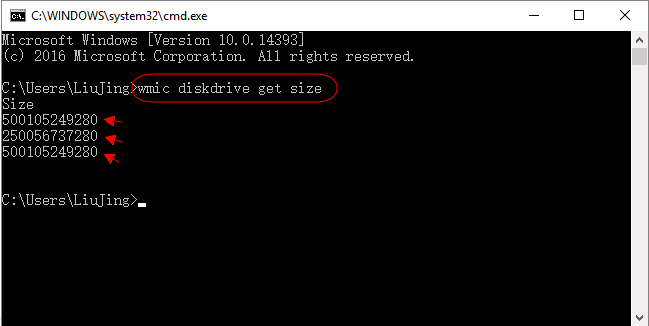
Viewing disk space on Linux can be helpful for some reasons. For one, it can help you see how much space is available on your system and ensure you have enough room for your files. Additionally, viewing disk space can help you find and delete any unwanted files that are taking up space on your system. Finally, if you notice that your system's disk space is regularly getting low, it could indicate that you need to upgrade your storage capacity. Regardless, knowing how to check disk space on Linux is a valuable skill for any Linux user.
You can check total disk size with df command or fdisk command.
1. df Command
Equal to disk free, df command enables to show used space on the Linux operating system. Select one of the commands:
We recommend using df -h.

2. Fdisk -I Command
Type fdisk -I, and you can see disk size and other partition information.

3. Linux du command

Other Commands:
One reason you might want to view disk space on a mac is to check how much available space you have left. This is important because if you ever need to install new software or save new files, you need to ensure that there is enough free space on your computer. Additionally, viewing your disk space can help you identify any old or unused files that are taking up valuable space. If you delete these files, it will give you more room to work with. Another reason to view disk space is to check the health of your hard drive. If your hard drive is getting full, it can start to slow down your computer. By regularly checking your disk space, you can ensure that your hard drive is running smoothly and that there is no risk of it becoming overloaded.
Step 1. Click on the Apple menu (Apple Icon) and choose "About This Mac."
Step 2. Click the Storage tab in the top toolbar to see the disk space.

Get Info is a comfortable way to check the total disk info.
Step 1. Access Finder - Press Option+Command+Space
Step 2. Locate the targeted hard drive in Finder and select the drive icon.
If your hard drive appears on the sidebar, click it directly.
If your drive is not showing, follow Go > Computer to find the hard drive.
Step 3. Then click the File menu and choose Get Info.
You can see the total capacity, available space, and used space.

When your c drive is full, you can add more space to the partition to free up disk space. To do so, Windows disk manager, EaseUS Partition Master, is one of the reliable software that can help you.
Step 1. Right-click on the D: partition with enough free space and select "Allocate Space".
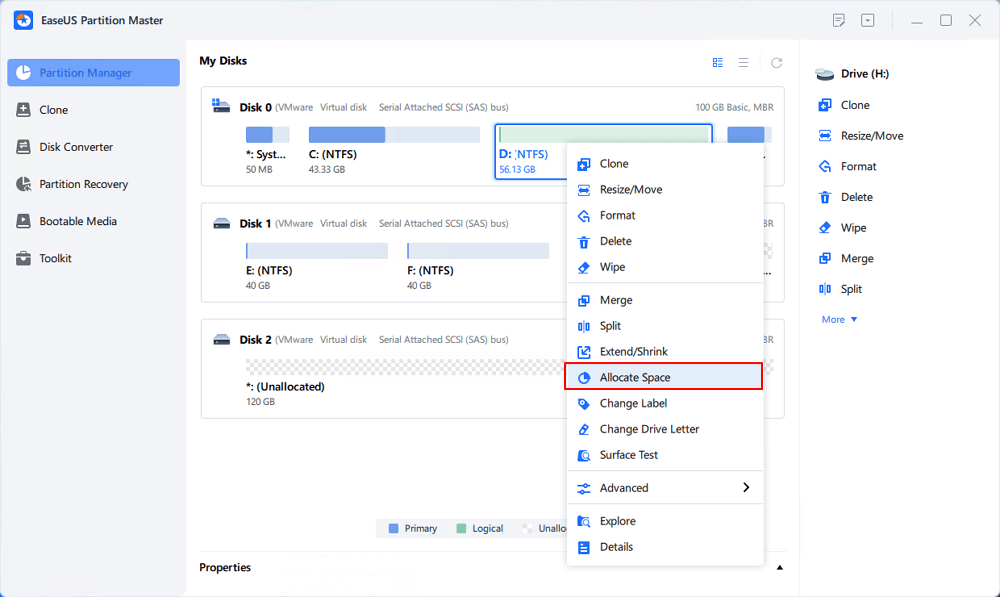
Step 2. Select the target partition - C: drive and drag the partition panel rightward to add the free space from D: drive to C: drive. Then click "OK" to confirm.

Step 3. Click the "Execute Task" button and click "Apply" to start the process of moving free space from D: drive to C: drive.
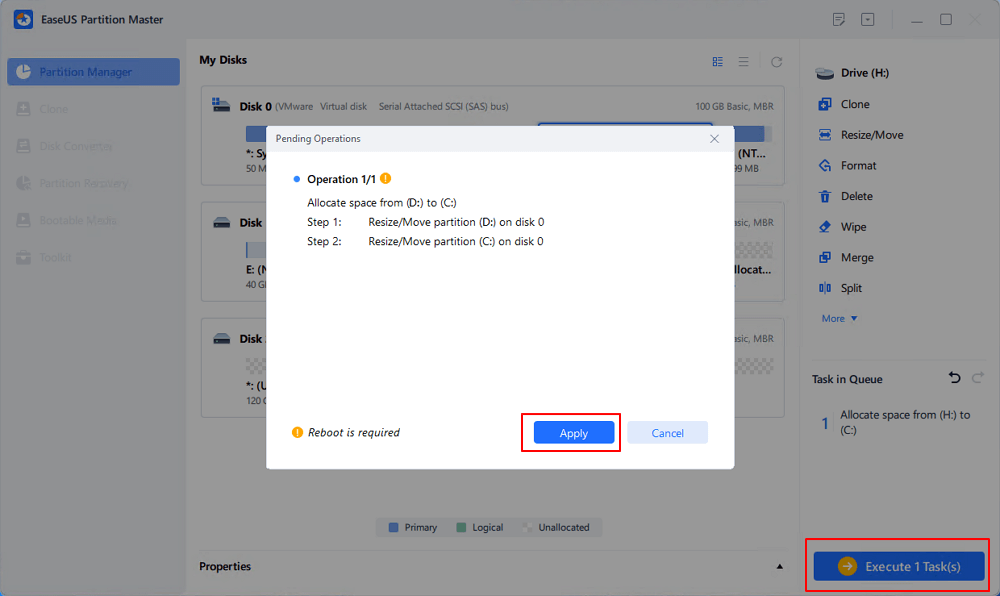
There are a few different ways to check disk usage and view disk space on a computer. You can check disk usage on a Windows computer by opening the Settings. You can view disk space on a Mac by opening the Finder and selecting About This Mac from the menu. A variety of programs available can provide more detailed information about disk usage and help you free up space. Whatever method you use, it's essential to keep an eye on your disk usage to ensure that your computer runs smoothly.
Was This Page Helpful?
Updated by Tracy King
Tracy became a member of the EaseUS content team in 2013. Being a technical writer for over 10 years, she is enthusiastic about sharing tips to assist readers in resolving complex issues in disk management, file transfer, PC & Mac performance optimization, etc., like an expert.
Related Articles
SD Card Shows 0 Bytes? Easy and Quick Fixes Here 🔥
![]() Sherly/Apr 28, 2025
Sherly/Apr 28, 2025
UEFI vs. BIOS: What's the Difference and How to Choose
![]() Jean/Apr 28, 2025
Jean/Apr 28, 2025
Solved: Ender 3 Not Reading SD Card [Quick Fixes]
![]() Cici/Apr 28, 2025
Cici/Apr 28, 2025
How to Fix SD Card Saying Full When Empty in Windows 11/10/8/7
![]() Brithny/Apr 28, 2025
Brithny/Apr 28, 2025
CHOOSE YOUR REGION
Start Your Free Trial!
Sign up to our newsletter, stay updated on news and exclusive offers from EaseUS. Don't worry, if you change your mind, you can unsubscribe at any time, free of charge. We value your privacy (Privacy Policy).
Start Your Free Trial!
Sign up to our newsletter, stay updated on news and exclusive offers from EaseUS. Don't worry, if you change your mind, you can unsubscribe at any time, free of charge. We value your privacy (Privacy Policy).